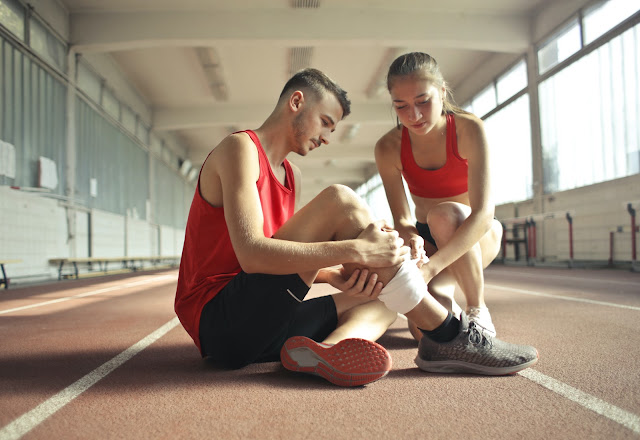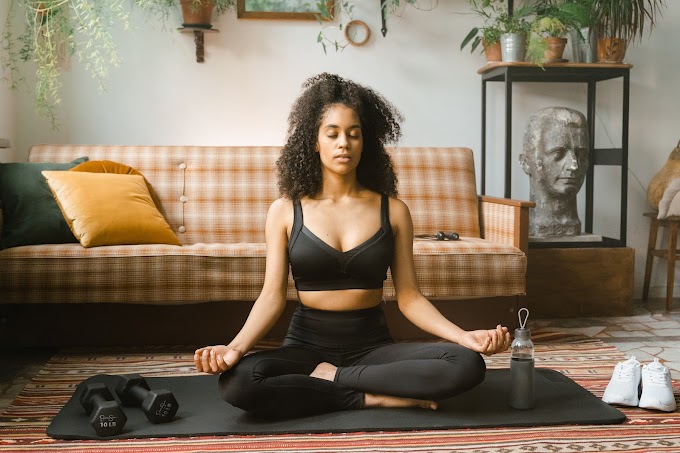10 Natural Pain Relief Tips for Knee Osteoarthritis12 Natural Pain Relief Tips for Knee Osteoarthritis
As we age, the cartilage in our knees can wear down, triggering osteoarthritis and knee pain that flares up when we’re walking and climbing stairs. Medications — such as anti-inflammatories, corticosteroids, and injections of hyaluronic acid — are often prescribed to treat osteoarthritis knee pain.
But those aren’t your only options. Natural remedies can also be used to ease knee pain and improve your quality of life, often in combination with conventional treatments, says William Martin, MD, a rheumatologist at UCLA Health in Los Angeles. Try these 12 tips to help relieve knee pain — just be sure to talk to your doctor before you test them out.
Important : Get instant Relief from Knee Pain - Click Here
1. Lose Weight (if You Need to) :
2. Exercise Regularly :
People with osteoarthritis of the knee often shy away from exercise because it can hurt, Martin says, “but being fit aerobically and maintaining muscle strength is very important to avoid muscle atrophy that can make symptoms worse.” In fact, according to a research review published in May 2019 in the Annals of Physical and Rehabilitation Medicine, about eight weeks of exercise can reduce pain in people with knee and hip osteoarthritis while boosting their quality of life.
The Arthritis Foundation tells people to do mini-squats as well as quad and hamstring stretches to help keep their knees strong. Start slowly and build up the number of reps you do. You can also work with a physical therapist to tailor exercises to your condition, suggests William Behrns, PT, DPT, a physical therapist at the Hospital for Special Surgery in New York City.
3. Stretch, Too :
Gentle, progressive stretching can improve blood flow and flexibility to stiff joints, says Shawn Talbott, PhD, CNS, LDN, author of Natural Solutions for Pain-Free Living. “Improving blood flow helps flush the joint and surrounding tissues with the delivery of oxygen and nutrients and the removal of breakdown products,” he says.
In addition, gentle movement that takes you through a range of motion, such as the practice of tai chi, may help ease knee osteoarthritis pain, according to the Arthritis Foundation. Tai chi also makes the list of the American College of Rheumatology recommendations for managing knee arthritis
4. Eat a Healthy, Anti-Inflammatory Diet :
.
5. Use Ice and Heat Therapy :
“Ice is mother nature’s anti-inflammatory,” says Darwin Chen, MD, an orthopedic surgeon specializing in joint replacement surgery of the hip and knee and an associate professor of orthopedics at the Icahn School of Medicine at Mount Sinai in New York City.
“Ice can be good at the end of a long day if your knee becomes inflamed,” he says, whereas heat is good for warming up your knee in preparation for an activity. Never apply ice directly to your skin; always place a towel on your skin before applying the ice to your knee.
6. Try Acupuncture :
Some people with osteoarthritis respond to acupuncture, especially those with arthritis of the knee or spine, according to the Arthritis Foundation. Traditional Chinese acupuncture is also one of the nondrug approaches recommended by the American College of Rheumatology.
Acupuncture combined with moxibustion, a technique that involves burning the herb mugwort close to the skin, is a course of Chinese medical treatment for osteoarthritis, says Ming Jin, MD, PhD, an acupuncturist and founder of the Ming Qi Natural Healthcare Center in New York City. Moxibustion can be as effective as oral medications for treating knee arthritis, according to a study published in the journal Medicine in February 2016. Your treatment should be tailored to your disease stage and may include acupuncture, acupressure, and moxibustion, Jin notes.
7. Sign Up for Physical Therapy :
Some people with osteoarthritis respond to acupuncture, especially those with arthritis of the knee or spine, according to the Arthritis Foundation. Traditional Chinese acupuncture is also one of the nondrug approaches recommended by the American College of Rheumatology.
Acupuncture combined with moxibustion, a technique that involves burning the herb mugwort close to the skin, is a course of Chinese medical treatment for osteoarthritis, says Ming Jin, MD, PhD, an acupuncturist and founder of the Ming Qi Natural Healthcare Center in New York City. Moxibustion can be as effective as oral medications for treating knee arthritis, according to a study published in the journal Medicine in February 2016. Your treatment should be tailored to your disease stage and may include acupuncture, acupressure, and moxibustion, Jin notes.
Important : Get instant Relief from Knee Pain - Click Here
8. Recruit an Occupational Therapist :
An occupational therapist can suggest ways to minimize stress on your knees as you go about your daily routine, says Jane McCabe, MS, OTR/L, an occupational therapist in Orange County, California.
One strategy that can ease joint strain: Always sit in a chair that has arms; that way, you can push off them when you stand up. Your occupational therapist can also recommend assistive devices that make it easier to stand up, like kneelers, according to the Arthritis Foundation.
9. Lower Your Stress Levels :
Stress can worsen plenty of chronic conditions — and knee osteoarthritis is no exception. The Arthritis Foundation says that stress can cause muscle tension, which then increases the perception of pain. And that, the organization notes, can trigger frustration and even depression.
To break the cycle, try to find a relaxation therapy that fits your lifestyle. Deep breathing (slow inhalations, followed by slow exhalations), meditation, progressive relaxation, and yoga can all help ease your stress levels and make it easier for you to stay relaxed.
10. Get Massage Therapy :
Massage therapy can help reduce knee pain — at least in the short term, according to a research review published in the Journal of Physiotherapy in July 2015. And another study, published in June 2017 in the journal Pain Medicine, found that people noticed a reduction in their symptoms, felt more relaxed, and experienced improvements in their quality of life.
It’s not clear how massage helps ease knee osteoarthritis symptoms, but one theory is that it lowers production of a neurotransmitter called substance P that is linked to pain, according to the Arthritis Foundation. Because it simply feels good, massage can also help relieve stress and even help you sleep better, the foundation adds.



.jpg)




